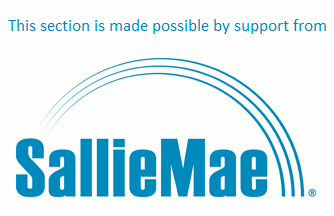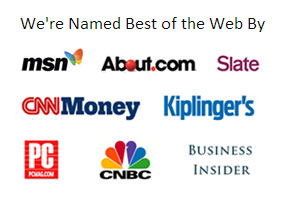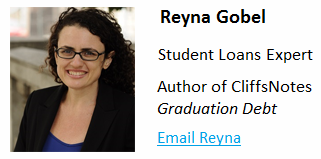25% Fed Student Loan Borrowers Qualify for Loan Forgiveness — Do You?

There is a federal program that, after 10 years of on-time payments, forgives the rest of borrowers’ student loan debt. That’s right — you can have any balance remaining on your student loan debt, and poof! It’ll be gone. Moreover, the Consumer Financial Protection Bureau estimates that one in four federal student borrowers qualify for this program — but many don’t know about or don’t take advantage of the plan.
The plan is called Public Service Loan Forgiveness (PSLF). Yes, it requires that you work a public service job — but many more jobs qualify for this program than you might expect. Read on to learn if you qualify, and, if so, how to take advantage of the program and potentially have your student loan debt forgiven.
How the Plan Works
The PSLF program was created to encourage recent college grads to enter the public service sector. In order to qualify, you must meet the following requirements:
- Work full-time at a qualifying public service job
- Work in public service for 10 years (but not necessarily 10 consecutive years or 10 years at the same public service job)
- Make your loan payments on time and in full every month while employed full time in a public service position
- Choose a qualifying repayment plan, which includes Income-Based Repayment Plan, Pay As You Earn, Income-Contingent Repayment Plan, 10-Year Standard Repayment Plan, or any other repayment plan where your monthly payment equals or exceeds what you would pay under a 10-Year Standard Repayment Plan.
In exchange, the federal government will forgive the rest of participants’ student loan debt after 10 years of service.
Even better, this plan works in conjunction with the various repayment programs where payments may be adjusted based on the borrower’s income and the student-debt-to-income ratio, such as Pay as You Earn. One common misconception is that you have to be earning very little to use these plans and PSLF, but there is no income cap. To see if you qualify, login to StudentLoans.gov and use their repayment estimator.
You also have to have federal direct loans (Stafford, PLUS, or Consolidation). Federal loans that do not qualify include FFEL and Perkins loans.
However, if you consolidate FFEL or Perkins loans into a Direct Consolidation Loan, that loan does qualify.
Qualifying Jobs
Here is the most important thing to know about jobs that qualify for PSLF — it’s not what you do for work that matters, it’s who you work for. So, basically, you can do almost any job you can imagine, and as long as you do it for a qualifying organization. And, moreover, many more organizations qualify for PSLF than you might imagine.
There are three main employer categories that qualify for PSLF: government agencies, organizations, and entities; 501(c)3 organizations; and other jobs that are public service, but don’t fall into the two previous categories. I’ve included more about each area below.
Government
This includes jobs in all federal, state, local, and tribal government positions and agencies (except elected members of the U.S. Congress). At the state and local levels alone, there are 18 million government positions in the United States. This includes federal agencies ranging from FEMA to the IRS to the Department of Health and Human Services to the National Endowment for the Arts. To get a full sense of how much this category covers, take a look at this massive official list of federal agencies.
501(c)3 Organizations
501(c)3 is the federal designation for an officially recognized nonprofit — and there are over one million of them — most charities and nonprofits are covered under the 501(c)3 umbrella. If you want to get an idea of what’s in your area, browse around a site like Great Nonprofits, which can give you information on different organizations based on your area of interest.
Other Public Service Organizations
These organizations might not be official 501(c)3 groups, but they provide services to the public. The Federal Office of Student Loans defines these organizations as:
...emergency management, military service, public safety, or law enforcement services; public health services; public education or public library services; school library and other school-based services; public interest law services; early childhood education; public service for individuals with disabilities and the elderly.
A Small Sampling of Jobs That Qualify
To give you an idea of just how many kinds of jobs qualify for PSLF, here are just a few. This list is far from all-inclusive, but it gives you an idea of the wide variety of positions that can lead to loan forgiveness:
- Teachers
- College professors
- Doctors or lawyers working for any organization in one of the categories listed above
- Employees at any level of federal, state, local, or tribal government
- Members of the Peace Corps or AmeriCorps
- Military personnel
- Law enforcement
- Any kind of creative working at a qualifying organization, including designers, writers, and performers
- Emergency services personnel
- Public health workers
- Public librarians
- Any type of engineer or technician working for a qualifying organization
- Support staff employed by any qualifying organization
Even President Obama would qualify, if he still had unpaid student loans and fit the other criteria.
How to Find Public Service Jobs
Many nonprofits post jobs on traditional job-search sites, such as Craigslist. In addition, here are some sites that cater specifically to non-profits:
As for government jobs, do an Internet search for your state, county, or city name with the word “jobs” to find the official site for your area, or visit the federal government’s jobs site.
If you’re not sure if the organization you’re interested in working at qualifies, the best way to find out is to fill out the employer certification form or call the public service loan forgiveness servicer and ask — more on that below!
How to Utilize the PSLF Program
Think PSLF is right for you? Here’s how to get started.
1. Make Sure You Have the Right Type of Loans
Only federal direct loans qualify for PSLF. But if you have FFEL or Perkins loans and you consolidate them into a direct consolidation loan, that loan does qualify.
2. Fill Out the PSLF Application Form With Your Employer
Fill out the Employment Certification for Public Service Loan Forgiveness form. Do it as soon as you start working with your employer to get your paper trail started. If you aren’t sure if your employer will qualify, call the public service loan servicer at 855-265-4038 to find out if your new employer will help you earn public service loan forgiveness.
3. Work Full-Time
Only full-time employment qualifies for PSLF. In this case, full-time is described as at least 30 hours a week. If you work a job that has you work full-time for most of the year and then take a few months off — like teaching — that still counts for a full year in terms of PSLF.
4. Make On-Time, Complete Payments
You only qualify for PSLF if you make full, on-time payments every month. But PSLF works with the various income-aware repayment plans, so if you feel like your loans are too expensive, check with your loan servicer to see if you qualify for another payment option with a lower monthly cost.
5. Fill Out the Employer Certification Form Again If You Get a New Job
Remember, you don’t have to stay in the same job or with the same employer for the full 10 years — in fact, your qualifying public service work doesn’t even need to be completed 10 years in a row. If you work in public service for five years, at a for-profit company for two years, and at another public service job for five years after that, you could qualify to have your loans forgiven after 12 years. So whenever you start a new job, fill out the employer certification form again to help keep track.
Are you planning to use PSLF?
This article is part of our New Graduate Help Center — a new Wise Bread section offering financial tips and life hacks to recent grads. This section is made possible by the support of Sallie Mae. Check out more great tips from this section:

 Why You Shouldn't Panic About Your Federal Student Loans
Why You Shouldn't Panic About Your Federal Student Loans 3 Things You Must Know About Repaying Your Private Student Loans
3 Things You Must Know About Repaying Your Private Student Loans What Recent Grads Must Know to Repay Federal Student Loans
What Recent Grads Must Know to Repay Federal Student Loans 15 Ways to Pay Back Student Loans Faster
15 Ways to Pay Back Student Loans Faster







